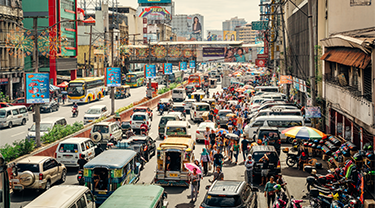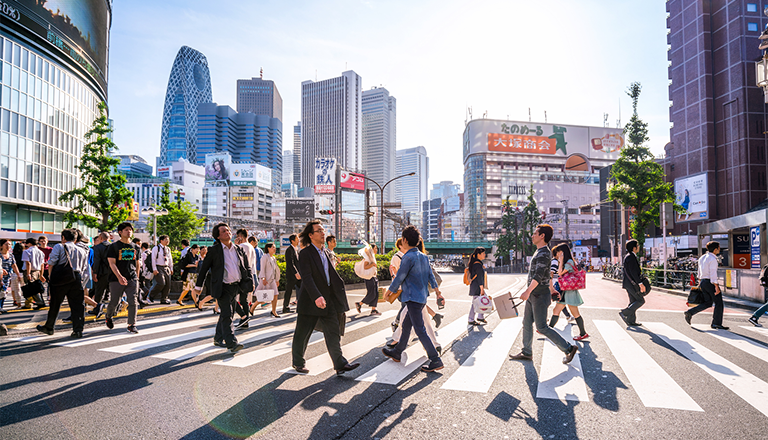As the new chief representative for the Philippines, I want to let you in on a little secret: This island nation in Southeast Asia is a hotspot for trade with Canada.
Between 2019 and 2023, Canada’s exports to the Philippines increased by almost 71%, making it one of the most robust markets in the Indo-Pacific region for Canadian products and services. With ample opportunities for agriculture and agri-food, infrastructure, cleantech, investment and more, the Philippines should be top of mind for Canadian companies.
Given the level of trade, the strength of the Filipino economy and its potential for Canadian exporters, Export Development Canada (EDC) opened a new representation in Manila in spring 2024. I can’t wait to welcome more Canadian businesses to this dynamic country.
To help make your early visits a success, here are eight etiquette tips for doing business in the Philippines.
- Relationships are key: Business in the Philippines is run by family-owned conglomerates. Understanding how these firms operate is paramount to succeeding in the market. Building personal connections is the best way to do that. Invest the time to develop local relationships and secure a good contact person within your target organization—an ally, in essence—to act as your guide in business dealings.
- Respect seniority/hierarchy: Filipinos have the tendency to defer to people in positions of authority, and this is especially true in business. Always show respect for seniority and rank, and “listen first, speak later” at boardroom-style meetings, even if you disagree with what’s been said. “Saving face” is important in Asian cultures, including the Philippines. You can keep relationships smooth—even when there are serious disagreements—by being polite, showing humility and always staying calm.
- Bring business cards: As in much of Asia, it’s customary to present your business card with two hands. Make sure your name is face up and positioned so that it’s legible to the recipient.
- Dress for the weather: When it’s intensely hot and humid—which is often—a suit isn’t necessary for business meetings. For men, a long-sleeved shirt and tie (or even no tie) and dress pants will suffice. Women can also skip the blazer. A skirt or pants with a long-sleeved dress shirt, or a dress, are acceptable. Another option for both men and women is the traditional white Filipino shirt, known as a barong tagalog, which can be worn in business settings.
- Don’t be too direct: Filipinos are generally courteous and deferential when speaking and will often avoid saying “no” or expressing disagreement directly. This can be challenging in business negotiations. Watch for body language and follow up regularly to stay on top of your business relationships and ensure you’re interpreting your contact’s position correctly.
- Small talk has a big impact: Filipinos put a high value on personal relationships, so it’s essential to take time to build rapport with your business associates. Be ready to engage in casual conversations and share stories about your family. It’s common to hear that your new associate has ties to Canada through a family member, as the Filipino diaspora in Canada is huge. These bits of small talk can go a long way in building trust and connection with your new associates.
- Plan for traffic: Punctuality is appreciated, but Filipinos are understanding when it comes to running behind schedule, as heavy traffic often makes it challenging to arrive on time. Likewise, don’t feel offended if your contacts are late for a meeting. Given the traffic snarls in Manila and elsewhere on the archipelago, it’s always advisable to build plenty of lead time into your commute. When delays occur, send a message to let your hosts know you’re running late.
- Grab a “Grab”: Given the congestion in Manila, hired cars are the best option for getting around, and they’re inexpensive. In addition to traditional taxis, an Uber-like service known as Grab is popular in Manila. But unlike Uber in Canada, you may wait quite a while for your ride to arrive. On top of that, the ride itself can take a long time, if you’re stuck in traffic. Again, be sure to give yourself lots of time to get to your destination.
Beyond business etiquette, I’d like to add a personal tip: When considering market diversification, treat the Philippines as an integral part of the Association of Southeast Asian Nations (ASEAN). Its position within the region is another reason why the Philippines is so exciting for Canadian exporters. Intra-ASEAN trade accounts for almost 23% of ASEAN’s total exports.
Canadian companies that have had success in ASEAN don’t just rely on any individual country as their market. They take advantage of the diversity that ASEAN offers and conduct business in multiple countries. The Philippines is a great starting point for this strategy.
You should also check out
Build your strategic knowledge, navigate cultural nuances, and expand to this dynamic region with confidence.
How EDC supports Canadian exporters
If you’re interested in expanding to the Philippines, ASEAN, and the Indo-Pacific, you don’t have to go it alone. Our knowledge services are here to help you understand the opportunities, and EDC Credit Insurance makes exporting less risky by protecting you against the risk of non-payment. When you have EDC Credit Insurance protection, your financial institution will typically lend against your insured invoices for 90% of their value, significantly increasing your access to cash.
EDC is part of the Government of Canada’s trade ecosystem of experts available to help you save time, learn more about your target markets and identify the capital you need to grow. This network includes Canada’s Trade Commissioner Service (TCS) and the solution-oriented departments and Crown corporations that can solve export problems and offer new perspectives, so businesses, like yours, can confidently expand and succeed, at home and abroad.
Want to learn more?
Answer a few questions about your company to connect with EDC and experience the export impact.




